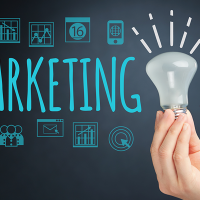You’re About to Discover the Top Secrets of Launching Your Product, even if you have no product launch skills and even if you have not yet launched a single product – Part I
Why Launch a Product? (The Super List)
So, what does every guru online tell you to do if you want to grow your online marketing business? Give away lead magnets to freebie-seekers. Build your list. Market affiliate products to them. Make commissions. We’ve all heard it, right? And you know what? That strategy worked. Back in 2012…
Problem is, it doesn’t work anymore. Nowadays, freebie-seekers have secondary “junk” email accounts that they reserve for collecting lead magnets but otherwise they never log in to them. Your emails are going to inboxes where they are left untouched, floating in a sea of thousands of other marketing emails. This, combined with the fact that many people even use fake email addresses, is what has led to such severely low email open rates throughout the industry. And not only does a list of freebie-seekers almost never open your emails, but the few of them that do will almost never buy anything. Why? Because they’re freebie-seekers!
So, what is it that successful internet marketers are doing differently? They’re each building a “super list”. A super list (phrase coined by the great Alex Jeffreys), is a list of real people, with real email addresses that they actually check, who actually habitually take out their credit cards and buy things online. In other words, it’s a buyers list. The difference between a buyers list and a freebie-seeker list is night and day. One makes you money and the other makes you angry.
So how do you get a buyers list? Easy. You launch a product and you get affiliates to send traffic to it. Then you simply integrate your payment platform with your autoresponder service so that buyers get added as subscribers automatically. Don’t worry. It’s not as crazy as it sounds and, more importantly, it’s the only way you’ll move forward in internet marketing.
Now we should note that this guide assumes you’ve already got a core product created. It’s okay if you don’t have a sales structure set up yet, such as sales pages, a funnel, or a member’s area, because we’ll cover all that next. But at a minimum we’re assuming you’ve already got a product created, whether it be an eBook, a video course, or a software tool. If you haven’t created a product yet, just grab our Product Creation guide which will have you cranking out digital products in no time.
How Do You Launch a Product?
There are a few ways to launch a digital product. One way is to do a “soft launch”. A soft launch is a low-key opening of the doors, so to speak. You set up a product, have it ready to accept sales, and instead of having a major announced launch period with special promotions, you simply start sending traffic to it.
On the other hand, there’s a “hard launch”. A hard launch is a publicized launch period with a specific beginning and end date. The idea here is to drive large amounts of traffic to your new product in a short period of time. In most cases, there’s a special discount during this short period which encourages people to adopt the product early. Ultimately, the goal of a hard launch is to bring in a large number of new customers (and revenue) and to make a very visible splash in the marketplace.
Since the goal of this guide is to get you a buyers list as quickly as possible, we’ll be focusing on how to accomplish a hard launch.
The most important “how” of your product, however, is traffic. Where will you get it? You certainly COULD drive your own traffic with paid ads and hope that you make a profit, but the most popular approach is to recruit affiliates (also called “JVs”). If you can convince and incentivize several affiliate marketers who already have their own audiences and email lists to promote your product, you’re basically handing off the problem of traffic generation to someone else. It’s also great because you don’t have to worry about spending your own money in advance. You’re simply paying commissions using money from sales that were already made by the affiliates. You also have the benefit of not having to worry about targeting and tweaking and other stuff you have to mess with when you pay for your own traffic. All the people on these affiliate marketers’ lists are already interested in your niche and are likely already habitual buyers of products like yours. So, for the purposes of this guide, we’ll be focusing on getting a bunch of JVs/affiliates to promote a hard launch. But before we start recruiting JVs and sending traffic, you’ll need to set up your launch structure and that’s what we’ll be covering next.
Building Your Launch Structure
Before you start recruiting JVs and sending traffic to a hard launch, you’ll need your actual launch structure in place. Your launch structure includes your sales pages, your sales funnel, your pricing model, as well as the marketplace or payment platform you’ll use.
Your launch structure also includes the backend infrastructure you’ll need for delivering your products to buyers and your initial interactions with them after they purchase. This includes setting up a support desk, a member’s area (or product delivery apparatus), and an autoresponder welcome sequence. (Note: many would argue that these last three items are better categorized as CRM rather than part of your launch structure, and that’s a valid point, but we’re dealing specifically with the immediate post-purchase interactions that often make the difference between happy customers and angry refunders, so we’ve included them as part of your launch structure). Let’s take a closer look at 2 of these.
Sales Funnel
Before you start building the pages, you’ll need to establish your funnel flow. Hopefully you’ve done a good job of splintering your product into multiple stand-alone components or combining your product with other relevant products. The reason you need to do this is so that you’ll have multiple products to upsell and downsell through a funnel in order to maximize your revenue. If you haven’t done this yet or aren’t sure how, see our guide on Product Creation.
The flow of your sales funnel basically handles what happens after a person buys your front-end product. Ordinarily, they’ll be offered a relevant, higher-priced product as an upsell. This product should ideally augment or reinforce what the front-end product does. You’ll then need to plan for a “yes or no” scenario. You’ll (probably) want a second upsell in case the buyer purchases the first upsell, and you’ll need a downsell if they decline it. This can theoretically go on as long as you want, but generally you’ll annoy people if your sales funnel is more than 4, maybe 5 products deep. Depending on what marketplace you’ll be using (discussed later in the next post), you’ll be able to create product listings and set up your sales funnel before designing your actual sales pages.
Pricing
Finding the perfect pricing strategy for the products in your funnel can make a world of difference. First, you’ll want to establish what your “normal” price will be after your launch period. In most cases, this will already be lower than your product’s actual assessed value. But then, for your special launch period, you’ll typically want to offer an even lower price to encourage early adopters. But be careful. This isn’t a race to the bottom. Often times, a price that is too low will kill the perceived value of your product and can actually drive prospects away. You’ll want to think long and hard about how to find the perfect “sweet spot” that maintains the perceived value of your product while also making it a no-brainer to snatch it up before the launch ends. Plan on a few different pricing ideas and combinations throughout your funnel so that, if you feel the offer isn’t performing well, you can change it up. Be sure to be taking notes if/when you make changes so you can compare performance at various price points.
In our next post, we will take a closer look on Marketplaces, SalesPages, Product Delivery and Memberships, Customer Support and more..



